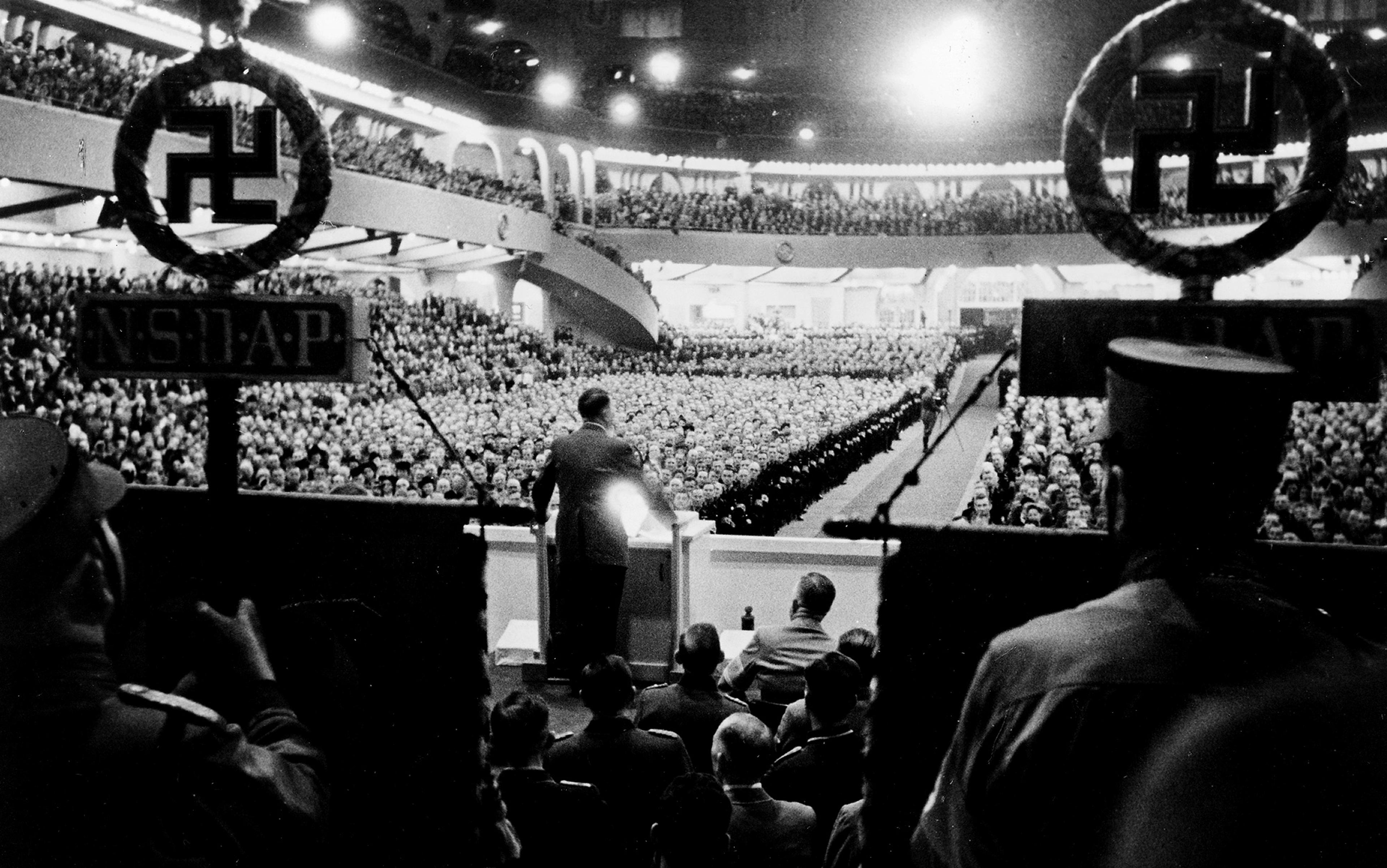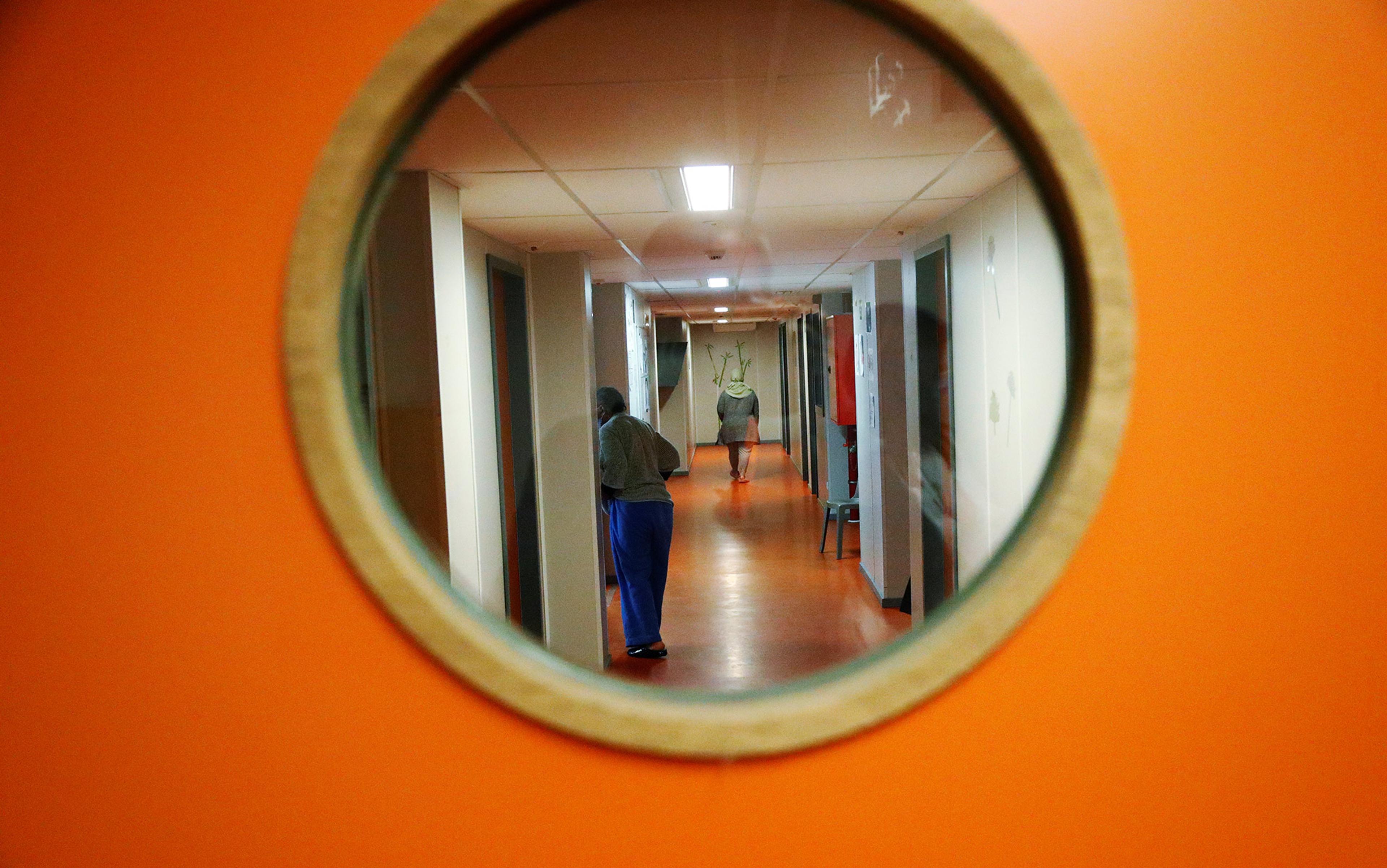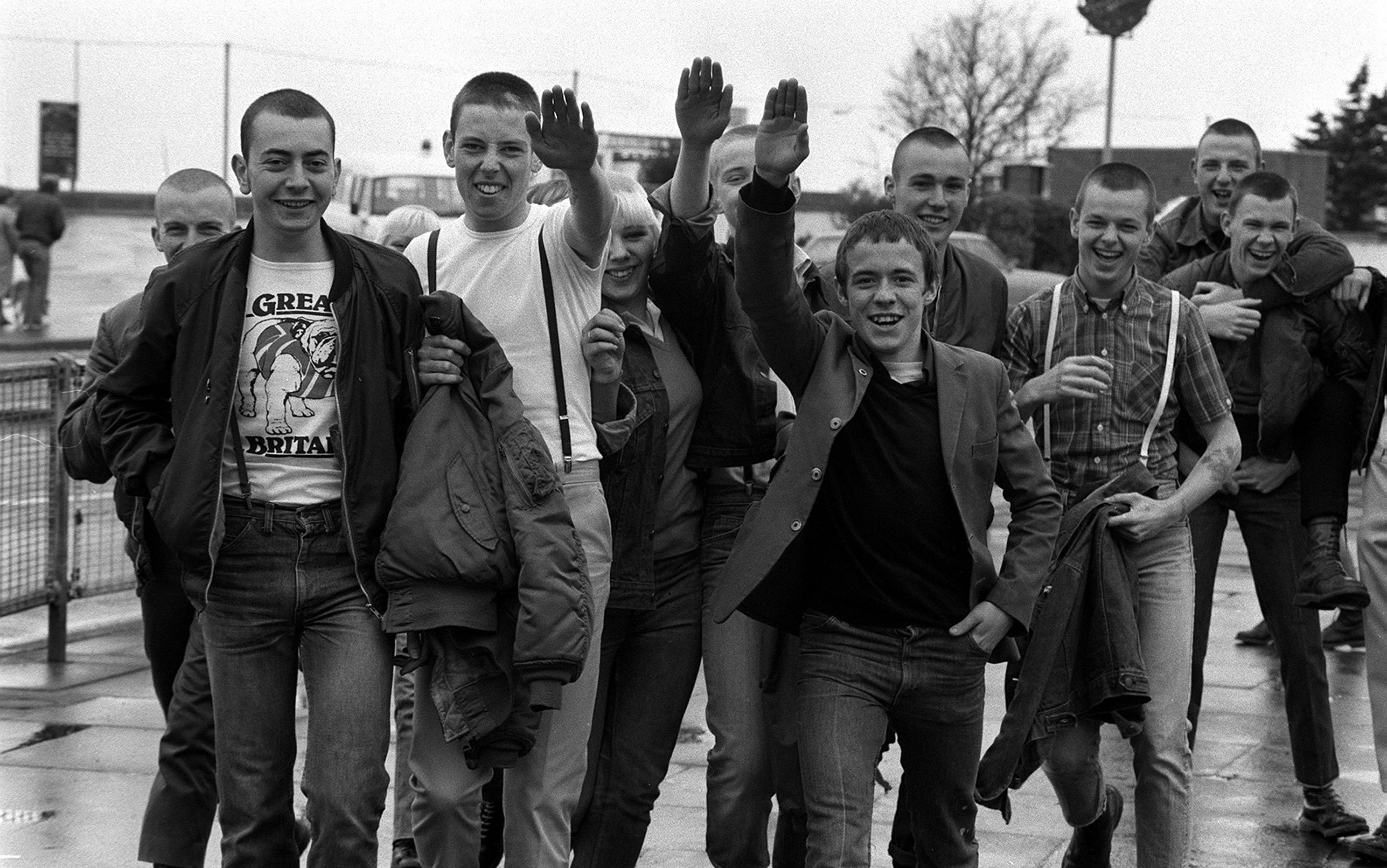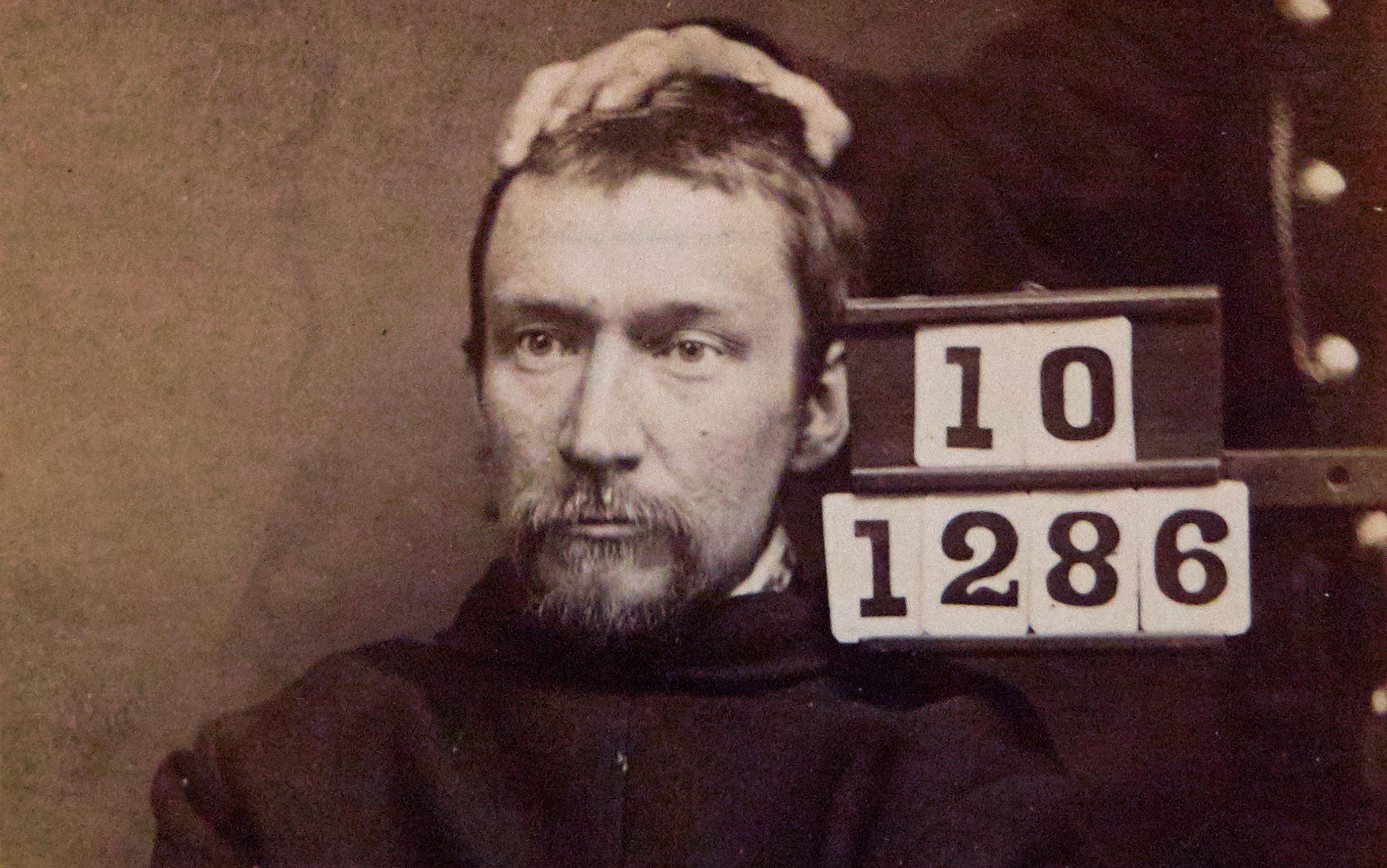In 1961, a young psychiatrist initiated a one-man insurgency against his own profession. ‘Psychiatry is conventionally defined as a medical specialty concerned with the diagnosis and treatment of mental diseases,’ he wrote. ‘I submit that this definition, which is still widely accepted, places psychiatry in the company of alchemy and astrology and commits it to the category of pseudoscience. The reason for this is that there is no such thing as “mental illness”.’
Fifty years after his book The Myth of Mental Illness: Foundations of a Theory of Personal Conduct first ventured this uncompromising view, its author Thomas Szasz visited Cornell University in upstate New York. He was there to speak to an audience of students, many of them coerced or bribed by their professors to attend, plus a few local lawyers and psychiatrists. His subject was ‘The Insanity Defence: The Case for Abolition’. The talk started late because a man in a wheelchair was being positioned near the front of the lecture hall. Szasz greeted him enthusiastically; the audience would later learn that he was Ronald Leifer, a psychiatrist who had been denied tenure at the Upstate Medical Center at Syracuse in 1966 for defending Szasz and his iconoclastic ideas against practically the whole of the psychiatric profession.
When it finally started, the lecture was heavily anecdotal and lasted barely half an hour. The 91-year-old psychiatrist spoke in a quiet voice and with a thick Hungarian accent. Students shifted in their seats. Then came the Q&A. Although the subject was the insanity defence, the audience was more interested in Szasz’s assertion that there was no such thing as mental illness. ‘What about schizophrenia?’ ‘How can you be a practising psychiatrist if you don’t believe in mental illness?’
One student asked him: ‘Are you trying to say we all have different brains?’ The lecturer seemed unsteady on his feet. ‘Yes,’ he replied, ‘we do.’ Another student put it to him that we might be determined by our neurological make-up. ‘I think you and I have different brains,’ Szasz replied. That got a laugh from the audience. It was clear that being the only one in the room with a brain like his was part of his persona; being contrarian was his way of being right. Throughout his career, even friendly co-optation irked him. When scholars started associating him with the anti-psychiatry movement, he wrote a book entitled Antipsychiatry: Quackery Squared (2009).
The psychiatrist inherited from the Inquisition the task of quarantining society’s dangerous elements
Szasz liked to present himself as a dissident. And yet, when he began dynamiting the foundations of psychiatry in the 1960s, rebellion was in vogue, and he seemed very much a man of his time. Along with so many other radicals of the decade of dissent who got half of what they wished for, he has largely been forgotten, his troubling declarations defused by decades over which he worked as an academic and a practising psychiatrist.
After the talk at Cornell, he confided over a stiff drink that he generally did not give talks anymore. ‘I’m too old,’ he told me. ‘Plus, not many people know I’m still alive.’ Indeed, not long after our conversation, Szasz died, last fall. But did his ideas die with him? On the contrary, it might be that the world has only recently come around to his way of thinking.
Near Szasz’s school in Budapest there stood a statue of Ignaz Semmelweis, a Hungarian obstetrician who found posthumous fame as a 19th-century martyr of science. To Szasz, the sickly and discontented young son of a Jewish businessman, Semmelweis became something of a hero. The late doctor’s claim to fame had been the discovery that it was possible to practically eliminate the often-fatal ‘childbed fever’ common among new mothers in hospitals if doctors simply washed their hands before assisting with childbirth — especially if they had just been performing autopsies. When his findings became more widely known in the 1840s, he expected a revolution in hospital hygiene. It didn’t come, and Semmelweis grew increasingly outspoken and hostile towards doctors who refused to acknowledge his discovery. Vitriolic academic exchanges ensued, and he was eventually lured to a mental hospital where his opponents had arranged for his incarceration. He was beaten severely and put in a straitjacket. He died within two weeks. Echoing Voltaire, Szasz recalled the doctor’s tragic life in an autobiographical sketch in 2004:
It taught me, at an early age, the lesson that it can be dangerous to be wrong, but, to be right, when society regards the majority’s falsehood as truth, could be fatal. This principle is especially true with respect to false truths that form an important part of an entire society’s belief system. In the past, such basic false truths were religious in nature. In the modern world, they are medical and political in nature.
Szasz was still a teenager when his Jewish family left Hungary, and just preparing for college when they settled in the US in 1938. He later confessed that his knowledge of America prior to his arrival was sketchy, and largely based on reading The Adventures of Tom Sawyer (1876) by Mark Twain. He had heard the ‘usual tales’ about ‘the land of movies, money, and the mistreatment of blacks’. When he enrolled in the University of Cincinnati in the winter of 1939, he discovered that discrimination against Jews, ‘not to mention blacks and women’, was ‘perhaps even more intense’ than it had been in Hungary.
Though he earned a degree in medicine, Szasz was much more interested in politics and philosophy. He chose training in psychoanalysis in Chicago, then a centre of the psychoanalytic craze, over a career as a medical doctor. Demonstrating textbook psychoanalytic ambivalence, he was simultaneously attracted and repelled by the prevailing image of psychoanalysts as the elect. In the same autobiographical sketch from 2004, published as part of the collection Szasz Under Fire: The Psychiatric Abolitionist Faces his Critics, edited by Jeffrey Schaler, he recalls:
The analysts passionately believed that they were treating real diseases, never voiced objections against psychiatric coercions, and believed that criminals were mentally ill and ought to be treated, not punished. These beliefs were an integral part of their self-perception as members of an avant-garde of scientific, liberal intellectuals.
His fellow psychoanalysts, with their ‘Left-liberal “progressive” prejudices’, fanatically denounced Republicans as ‘either fascists or sick or both’. As a practising psychoanalyst, an academic psychiatrist (with tenure) and a Right-wing libertarian, Szasz felt he belonged to an embattled minority, an elect of a different sort. It was the ideal position from which to deliver his dissident strike.
It came in 1961 with the publication of The Myth of Mental Illness, wherein Szasz asserted that psychiatry, unlike medicine, could demonstrate no physical basis for the ‘diseases’ it identified and ‘treated’.
‘To speak of elevated blood pressure and hypertension,’ he wrote, ‘of sugar in the urine and diabetes, all as “organic symptoms”, and to place them in the same category as hysterical pains and paralyses is a misuse of language; it is nonsensical.’ Masquerading as scientists, psychiatrists abused scientific concepts and deluded their patients.
Worse still, they acted as henchmen for society and state. ‘[T]herapeutic interventions have two faces,’ Szasz wrote; ‘one is to heal the sick, the other is to control the wicked’. Yet the standard for wickedness is always subjective and variable, and so the psychiatrist inherited from the Inquisition the task of quarantining society’s dangerous elements. It was not a coincidence that, even decades after the word ‘psychiatrist’ entered English in 1890, practitioners were often called ‘alienists’, derived from the French aliéné, meaning both ‘alienated’ and ‘insane’. First, Szasz wrote, it was ‘God and the priests’ who kept the unruly in check. Then came ‘the totalitarian leader and his apologists’, along with ‘Freud and the psychoanalysts’.
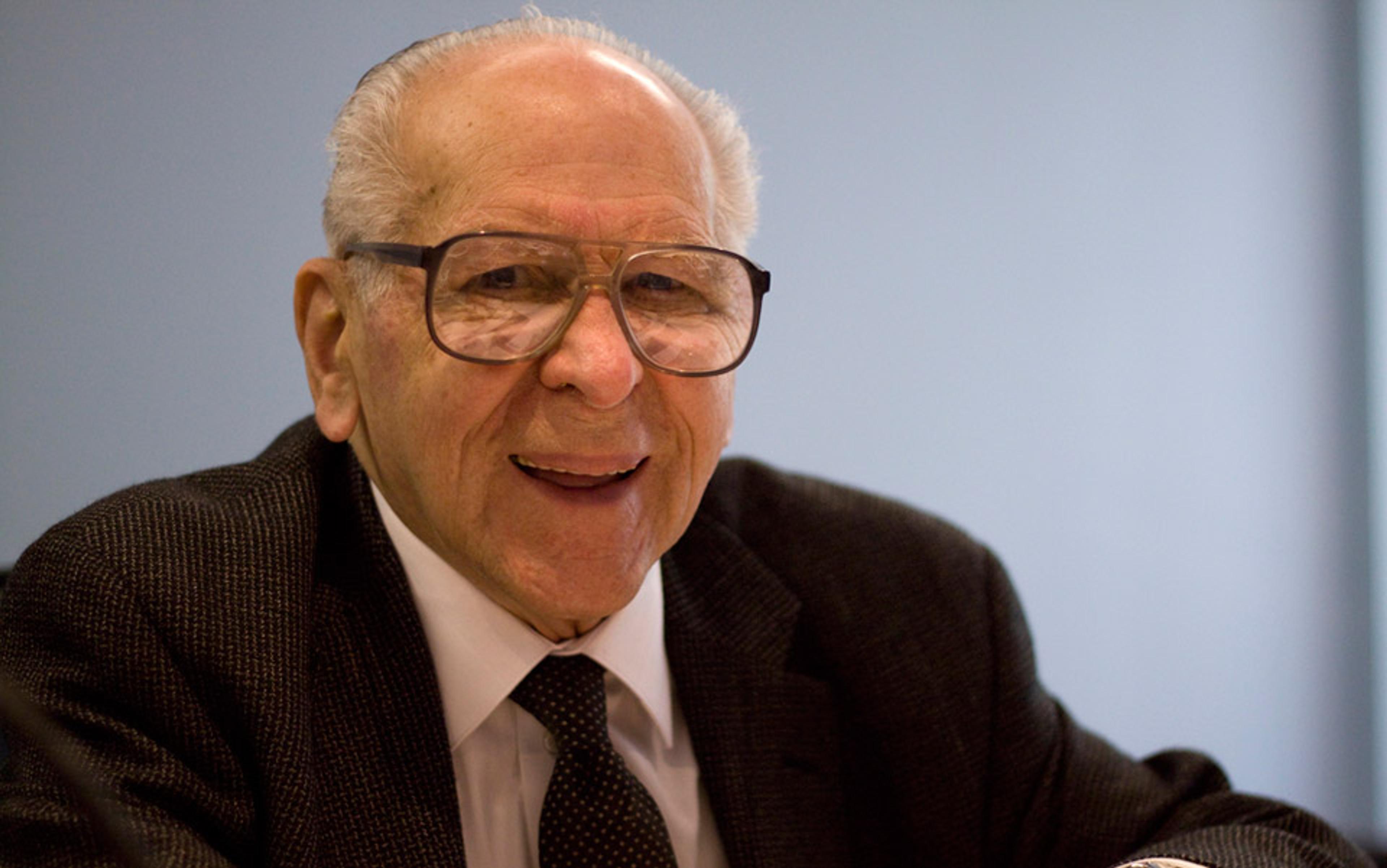
Dr Thomas Szasz pictured at his 90th birthday seminar in London. Photo by Jennyphotos
The most enthusiastic readers of The Myth of Mental Illness did not share — or even know about — Szasz’s Right-wing leanings, which are not evident in the book. As one critic, R E Kendell, the late president of the Royal College of Psychiatrists, has pointed out, his early devotees were often Left-wing students eager to overthrow established dogma across the board. Another of Szasz’s critics, the Harvard Medical School psychiatrist Thomas Gutheil, called him ‘a ’60s kind of guy’ and ‘an anti-establishment rebel’.
Szasz certainly wasn’t alone in seeing a sinister force behind diagnoses of insanity. There seems to have been something in the air in 1961: a few months after his book came out, Ken Kesey’s novel One Flew Over the Cuckoo’s Nest (1962) introduced the popular imagination to the iconic nightmare of Nurse Ratched, a character whose narcotic soft power could transform the socially marginal into the terminally insane and literally lobotomise dissent. ‘Total institutions’ are the theme of the Canadian sociologist Erving Goffman’s autobiographical collection, Asylums: Essays on the Social Situation of Mental Patients and Other Inmates (1961). In Goffman’s analysis, mental hospitals were places in which incarcerated individuals were ‘systematically, if often unintentionally mortified’, generally becoming ‘cooperators’; ‘normal’, ‘programmed’, or ‘built-in’ members. It was in 1961 that the French historian Michel Foucault published Madness and Civilization. Foucault, coming from the Left, concluded in eerie harmony with Szasz that language was behind the partition of the ‘sane’ from the ‘insane’. ‘[T]he language of psychiatry … is a monologue of reason about madness.’ Also in 1961, Frantz Fanon, a psychiatrist working in Algeria during the Franco-Algerian War, wrote The Wretched of the Earth, condemning the psychiatric profession for using the language of medicine to label African resistance to colonialism as a kind of mental illness.
‘Psychiatry is a threat to civil liberties, especially to the liberties of individuals stigmatised as “Right-wingers” ’
Within this 1961 consensus, Szasz was conspicuously alone in mounting the barricades from the Right. But he and his new allies were soon to part ways.
In 1962, Major General Edwin Walker was charged with ‘inciting, assisting, and engaging in an insurrection against the authority of the United States’ for calling on residents of Mississippi to rise up and oppose the admission of a black student into an all-white college. Walker believed, among other things, that communists had infiltrated the US military (if this sounds familiar, it might be because Walker was a model for General Jack D Ripper in Stanley Kubrick’s 1964 film, Dr Strangelove). Instead of facing a military hearing, Walker was flown for examination to the US Medical Center for Federal Prisoners in Missouri. A government psychiatrist concluded, based on reports of Walker’s behaviour, that he was probably mentally disturbed. Szasz protested the decision, and Walker was allowed to go free.
Writing about the Walker case in 2009, Szasz contended that the state’s attempt to pathologise the major general as a ‘racist’ bore comparison with the pathologisation of escaped slaves in the 19th century:
Before the Civil War, proslavery physicians in the South diagnosed black slaves who tried to escape to the North as mentally ill, ‘suffering from drapetomania’. In the Walker case, pro-integration psychiatrists in the North diagnosed white segregationists as mentally ill, ‘suffering from racism’.
After Walker, Szasz took up the cause of a high-profile Republican. In the run-up to the 1964 presidential elections, Fact magazine published ‘The Unconscious of a Conservative: A Special Issue on the Mind of Barry Goldwater’, which contained the results of an informal survey of psychiatrists on the mental competence of the Republican candidate. More than 1,000 respondents declared him ‘psychologically unfit to be president of the United States’, and several offered a diagnosis of paranoid schizophrenia.
Szasz was not among them. In the psychological marginalisation of Walker and Goldwater, he saw a trend towards the pathologisation of the Right in general. The following year he declared that ‘psychiatry is a threat to civil liberties, especially to the liberties of individuals stigmatised as “Right-wingers”.’ If those on the Left focused on how the diagnosis of insanity was being used to marginalise unpopular voices, Szasz insisted the most unpopular voices were to be found, not in the slums or the colonies, but among US conservatives.
And yet, when Szasz chronicled the history of ideological quarantine, his own earliest examples tended to feature conservative henchmen. There was the German physician Carl Theodor Groddeck, who in 1849 wrote and published an MD thesis titled De morbo democratico, nova insaniae forma (On the Democratic Disease, A New Form of Insanity). Groddeck’s thesis warned of a democratic epidemic that might destroy all ‘individual self-consciousness’. Szasz also praised the American socialist writer Jack London, whose 1908 novel The Iron Heel raged against the ‘social role of institutional psychiatry’ in segregating and neutralising Leftist opposition. To Szasz, the book was ‘at once perceptive and prophetic’. But it prophesied not the later persecution of the Left so much as ‘the tyrannies that were yet to come — in Russia and Germany’:
When such bureaucratic and totalitarian principles and methods are applied to mental health planning and organisation — as indeed they are both in England and the United States — the psychiatric physician emerges as a political evangelist, social activist, and medical despot. His role is to protect the state from the troublesome citizen. All means necessary to achieve this are justified by the loftiness of this aim. The situation in Germany under Hitler offers us a picture — horrible or idyllic depending on our values — of the ensuing political tyranny concealed behind an imagery of illness, and justified by a rhetoric of therapy.
Such was the bridge Szasz constructed between Jack London’s socialism and his own thinking. Both men occupied an unpopular and embattled opposition, both spoke for the marginalised, and both pointed to a truth concealed by institutional authority. Szasz had no use for the gulf between London’s politics and his own, so he ignored it. Right and Left needn’t bear any relation to right and wrong.
Szasz arrived at this separation of politics from morality in part by dismantling the justification for the insanity defence. In 1843, a Scottish radical called Daniel M’Naghten shot Edward Drummond, mistaking the private secretary of Britain’s prime minister Sir Robert Peel for Peel himself. In the course of the trial, M’Naghten was found ‘not guilty by reason of insanity’, and confined to an asylum for the criminally insane. Owing to the high profile of his intended target, this verdict proved unpopular. A select panel of English judges gathered to opine on the legal application of the insanity defence, and their responses were codified as the M’Naghten Rules, which have since set the terms for the insanity plea in judiciaries around the world. Their crux is that, to establish a defence on the ground of insanity, it must be proven that the accused was ‘labouring under such a defect of reason … as not to know the nature and quality of the act he was doing; or, if he did know it, that he did not know he was doing what was wrong’.
‘France was the name of a country. We should take care that in 1961 it does not become the name of a nervous disease’
For Szasz, the M’Naghten Rules failed to acknowledge all the many different circumstances that could impair a person’s capacity to tell right from wrong. They made no distinction between the influences of congenital idiocy, drunkenness and, most importantly for Szasz, ideology. As he wrote in his book Law, Liberty, and Psychiatry (1963): ‘The socioeconomic, political, and ethical implications of deviant behaviour were obscured in favour of its so-called medical causes.’ Thus an act like M’Naghten’s lost all political meaning simply because it was deemed to have been committed by a madman.
Given this history of medical persecution, the insanity defence was one area where Szasz and Leftist-progressives of the time could agree on the terms of engagement. Both sides argued it was unfair to call political opponents crazy (although both also did so regularly), and both sides asserted that their own ‘unpopular politics’ had a right to a hearing and a special moral status precisely because they were on the embattled fringe. Yet Szasz’s unease with the insanity label went beyond its propensity to classify political opposition as madness. In line with his distinctively conservative perspective, he also feared that it removed responsibility from criminal acts. Unpopular politics should literally have their day in court, and this meant talking about a defendant’s motives (political or otherwise), as well as punishing them for crimes they had committed. This was not a matter of science, but of morality.
The same year that The Myth of Mental Illness appeared, the logistical mastermind behind the Holocaust of Hungarian Jewry, Adolf Eichmann, was put on trial in Jerusalem. Eichmann’s case brought the very concept of criminal guilt into question in a new way. In her 1963 book on the trial, the philosopher Hannah Arendt insisted that Eichmann, far from being a monster or a ‘Bluebeard in the dock’, was, in fact, ‘terribly and terrifyingly normal’. She expressed unease with the idea that intent to do wrong is necessary for the commission of a crime. ‘Where this intent is absent,’ she wrote, ‘where, for whatever reasons, even reasons of moral insanity, the ability to distinguish between right and wrong is impaired, we feel no crime has been committed.’ Eichmann was operating in a society that did not merely accept but actively encouraged the killing of Jews, so it was ‘not his fanaticism but his very conscience that prompted Eichmann to adopt his uncompromising attitude’. Nevertheless, Arendt insisted, he was guilty, and his very normality was part of his guilt.
The Left raised no objection to Eichmann being considered ‘normal’, because ‘normal’ was just what the decade of dissent despised most. Jean-Paul Sartre, in the preface to Fanon’s The Wretched of the Earth, argued that everyone who lived within the system was guilty of participating in it. Naturally, he used the insanity label to make the case:
Fanon reminds us that not so very long ago, a congress of psychiatrists was distressed by the criminal propensities of the native population. ‘Those people kill each other,’ they said, ‘that isn’t normal’ … These learnt men would do well today to follow up their investigations in Europe, and particularly with regard to the French … since our patriots do quite a bit of assassinating of their fellow-countrymen … In other days France was the name of a country. We should take care that in 1961 it does not become the name of a nervous disease.
Under the pressure of this two-flanked attack on normality, it’s little wonder that the political spectrum seemed to converge just as the ethical polarity between ‘normal’ and ‘insane’ was reversed. Arendt’s theory of totalitarianism encompassed both extreme ends of the political spectrum; in Hitler’s Germany and Stalin’s USSR alike, she saw a ‘novel form of government’ whose values were ‘radically different from all others’. This made Eichmann a new type of criminal, one who ‘commits his crimes under circumstances that make it well-nigh impossible for him to know or feel that he is doing wrong’. As such, the M’Naghten Rules simply did not apply. All that the insanity label achieved was to excuse the new criminal and quarantine the dissident.
Nevertheless, in seeking to discredit the insanity defence in order to preserve morality, perhaps Szasz and Arendt both came unmoored from the traditional political spectrum altogether. This might explain why Szasz’s view of mental illness as a myth was shared by many on the Left. As for Arendt, when in 1972 the American political scientist Hans Morgenthau asked about her politics — ‘What are you? Are you a conservative? Are you a liberal?’ — she replied: ‘You know the Left think that I am conservative, and the conservatives sometimes think I am Left or I am a maverick or god knows what. And I must say I couldn’t care less.’
In some ways, the spirit of 1961-style iconoclasm around the insanity label might seem very distant now. Certainly the medicalisation of ‘abnormal’ behaviours continues, to the extent that Szasz’s repeated insistence that ‘ADHD is not a disease’ did nothing to slow the persistent increase in diagnoses. Still, there are signs that we have come to share his moral discomfort with the judicial notion of insanity. On 22 July 2011, Anders Behring Breivik killed 77 people at a government building and Left-wing youth camp near Oslo in Norway. Before long, a morbidly fascinated worldwide audience was scouring the 1,500-page manifesto he had posted online, finding citations from a Leftist literary critic, a Nobel Prize-winning Holocaust survivor, Vlad the Impaler, and the Unabomber, among others. Was Breivik’s deed political or merely mad? This question became central to the legal case against him. An initial psychiatric panel diagnosed him with paranoid schizophrenia.
After the results of the first evaluation were announced, the killer, as well as many of his victims and their families, cried foul. In a long letter addressed to the Norwegian media, Breivik — an unapologetic exponent of the extreme Right who greeted the court with a raised fist in fascist salute — wrote: ‘To send a political activist to a mental hospital is more sadistic and more evil than killing him! It is a fate worse than death.’ Meanwhile, 56 of the victims and their families complained that if Breivik were declared insane, it would mean that he was not responsible for his crimes. In that moment, Right and Left converged on the claim that applying the insanity label would amount to a miscarriage of justice. Both sides were satisfied when a second evaluation declared him sane. In the words of Tore Sinding Beddekal, one survivor of the shootings: ‘I am relieved to see this verdict. The temptation for people to fob him off as a madman has gone.’
On 8 September 2012, barely two weeks after Breivik was sentenced to 21 years in prison, the death of Thomas Szasz placed a peculiar bracket on an era of dissent. Though several decades have passed since he first called mental illness a myth, our world is still very much under the influence of his time, when Right and Left sought to eliminate insanity in order to lionise dissent, legitimise the marginal and condemn the new normal. Few other issues show a convergence of Right and Left so far-reaching, while still allowing both sides to adhere to their politics and maintain a sense of total opposition. A hero is born for one side at the same moment that the axe of justice falls for the other, and so it seems that everybody wins. But it might also be that something has been lost. Cosseted by such a firm consensus, could we even recognise true dissent if we saw it?
Correction, 14 May 2013: the original version of this article stated that Szasz was a Republican. The more accurate designation is Right-wing libertarian.


